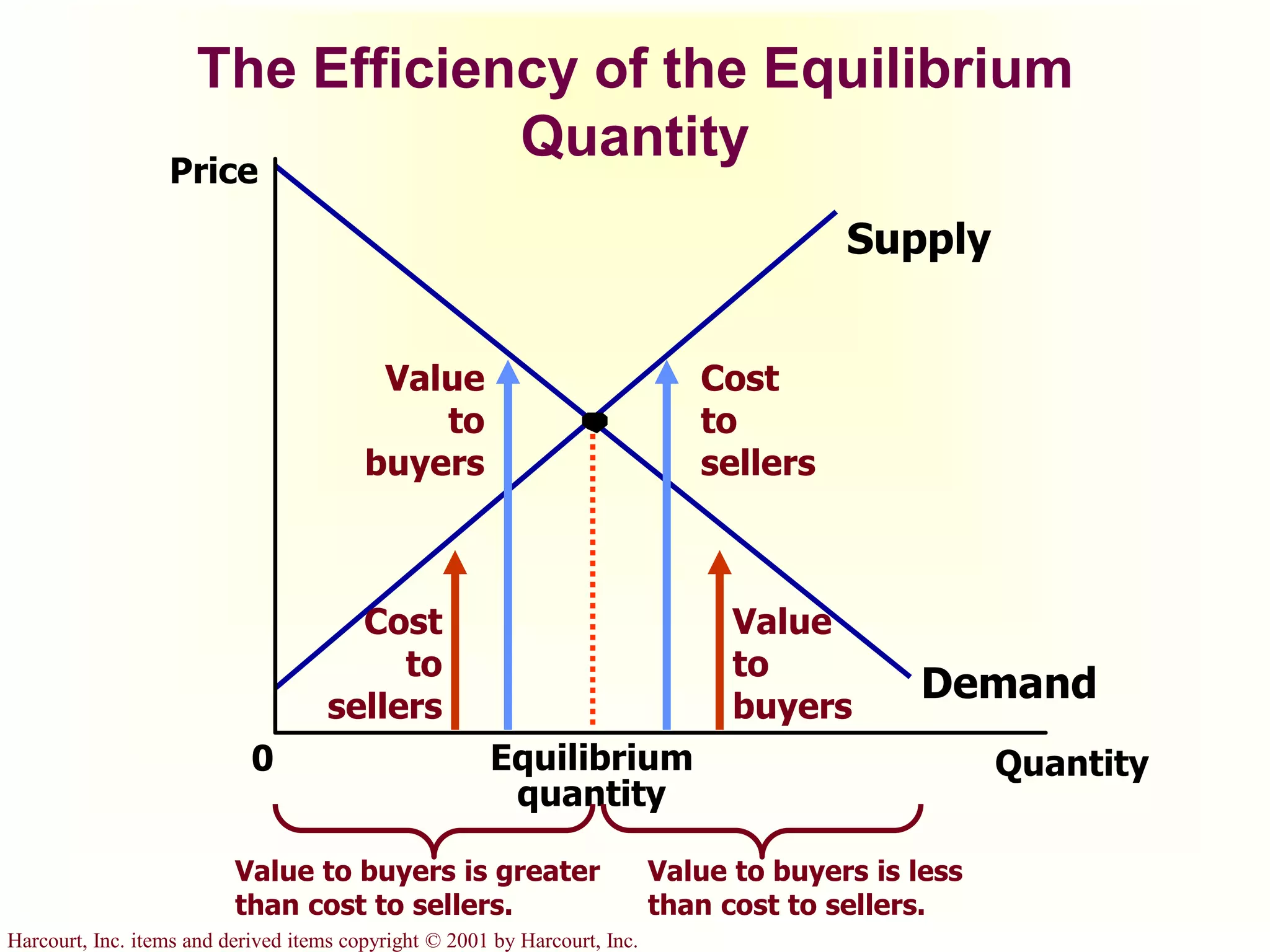The document discusses welfare economics and how market equilibrium maximizes total welfare. It defines consumer surplus as the difference between what consumers are willing to pay and what they actually pay, which can be measured by the area below the demand curve. Producer surplus is defined as the difference between what producers receive and their costs, which can be measured by the area above the supply curve and below the price. The equilibrium price and quantity maximize total surplus, the sum of consumer and producer surplus, meaning the allocation of resources is efficient. However, market power or externalities can cause inefficiencies.




















































